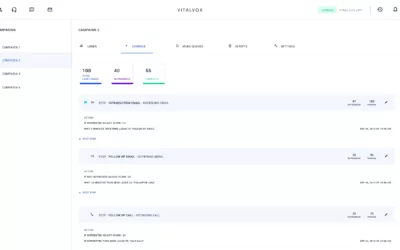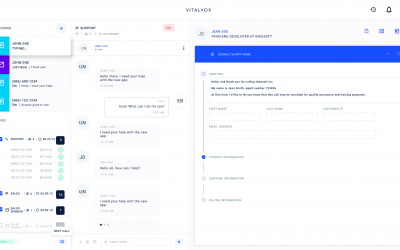Leveraging customer feedback is a powerful tool for contact centers striving to improve their services. Actively listening to voices—your customers’ voices—can refine your approach, enhance satisfaction, and drive long-term success. In this post, we’ll explore the critical role of customer feedback in contact centers and discuss how to leverage it effectively.
Why Customer Feedback Matters
Customer feedback provides a direct line to your customers’ needs and expectations. It helps you understand what’s working, what isn’t, and where improvements are necessary. When contact centers prioritize listening to customer feedback, they gain insights that can refine services, leading to enhanced satisfaction and loyalty.
Moreover, feedback isn’t just about addressing complaints; it’s about recognizing opportunities for growth. For instance, positive feedback highlights areas where your team excels, offering a model for best practices. On the other hand, negative feedback is a guidepost for necessary changes, making it a valuable learning tool. Therefore, actively seeking and analyzing feedback should be a core strategy for any contact center committed to excellence.
Effective Methods for Collecting Feedback
Collecting feedback must be strategic to be meaningful. To achieve this, here are some proven methods to gather customer insights effectively:
- Surveys and Questionnaires: Simple post-call surveys can provide instant feedback on the customer experience. Therefore, keep questions short, relevant, and straightforward to encourage participation.
- Social Media Monitoring: Customers often voice their opinions on social media platforms. By monitoring these channels, you can capture unfiltered feedback and respond promptly to concerns.
- Call and Chat Transcripts: Analyzing transcripts from calls and chat interactions can reveal common pain points and areas where agents excel, providing a wealth of actionable insights.
- Customer Interviews: Direct interviews with customers can give deeper insights into their experiences. This approach is more personal and often uncovers issues not captured by standard surveys.
- Net Promoter Score (NPS): NPS measures customer loyalty by asking how likely they are to recommend your service. As a result, a high NPS indicates satisfaction, while a low score signals areas needing attention.
Using a mix of these methods ensures a comprehensive view of customer sentiments, giving you the data needed to make informed decisions.
Turning Feedback into Action
Collecting feedback is only the first step. To truly leverage it, contact centers must act on the information gathered. Here’s how to turn feedback into meaningful change:
- Analyze Data Regularly: Regularly review feedback to spot trends and recurring issues. This analysis should be ongoing to keep up with evolving customer expectations.
- Prioritize Key Areas: Not all feedback can be addressed immediately. Therefore, focus first on issues that significantly impact customer satisfaction, such as long wait times or unclear communication.
- Train and Empower Agents: Use feedback to identify training needs. Then, empower your agents with the skills and knowledge to handle common customer concerns effectively.
- Implement Changes and Monitor Results: Once changes are made based on feedback, monitor the results closely. Adjust your approach as necessary to ensure improvements lead to better customer outcomes.
- Communicate with Customers: Let customers know their feedback has been heard and what steps you’re taking to improve. This transparency builds trust and shows that their opinions are valued.
Benefits of Proactive Listening
Proactive listening and acting on feedback can transform your contact center. Here are some of the key benefits:
- Improved Customer Satisfaction: Addressing customer concerns promptly enhances satisfaction and can turn a negative experience into a positive one.
- Increased Customer Loyalty: When customers feel heard, they are more likely to remain loyal to your brand. Additionally, listening fosters a stronger connection between the customer and your company.
- Enhanced Agent Performance: Feedback highlights areas where agents can improve, leading to targeted training and development opportunities.
- Operational Efficiency: Understanding common customer pain points helps streamline processes, reduce call handling times, and improve overall efficiency.
Conclusion: Leveraging Customer Feedback
Leveraging customer feedback in contact centers is not just about listening—it’s about understanding, acting, and continually refining your services. By making customer feedback a cornerstone of your strategy, you can enhance satisfaction, build loyalty, and drive success.
Contact Us
Ready to leverage customer feedback to improve your contact center? Reach out today to learn how our solutions can help you actively listen to your customers and elevate your service quality. Contact us for a personalized consultation!



